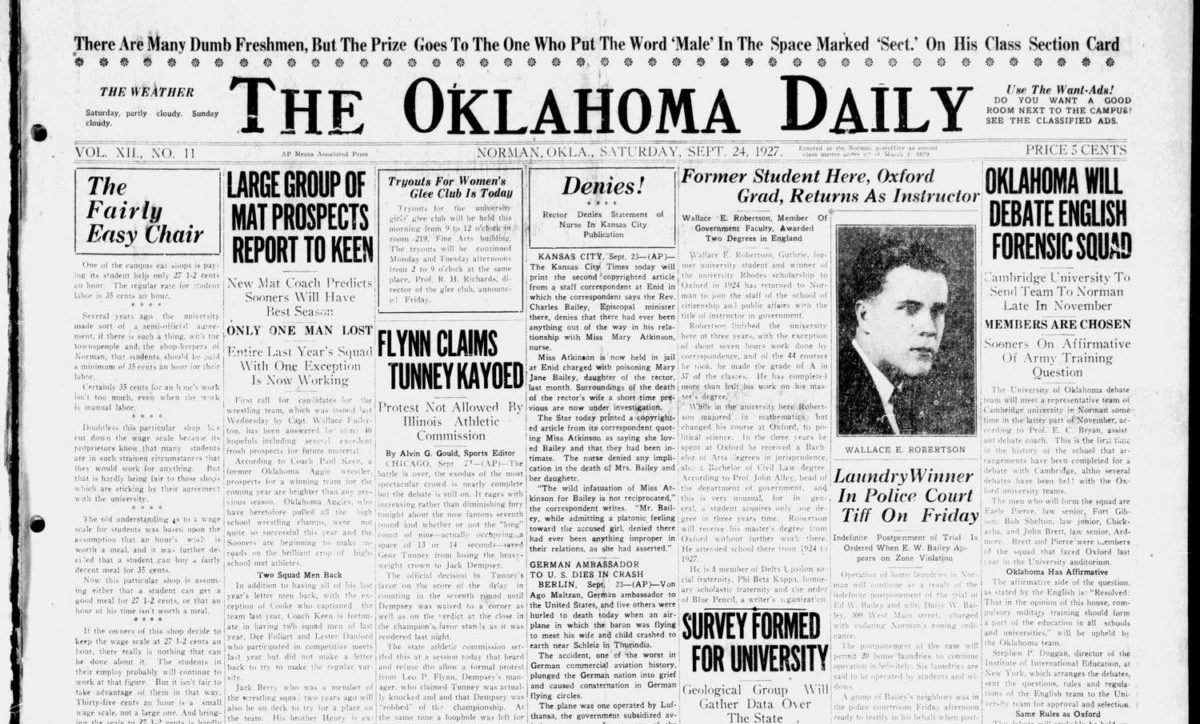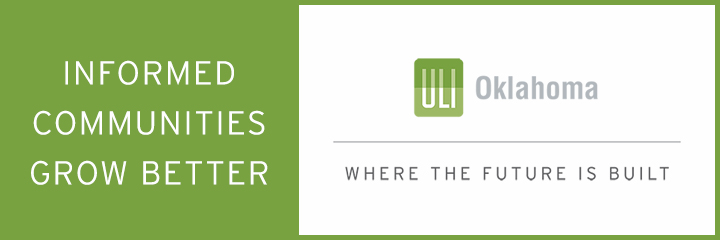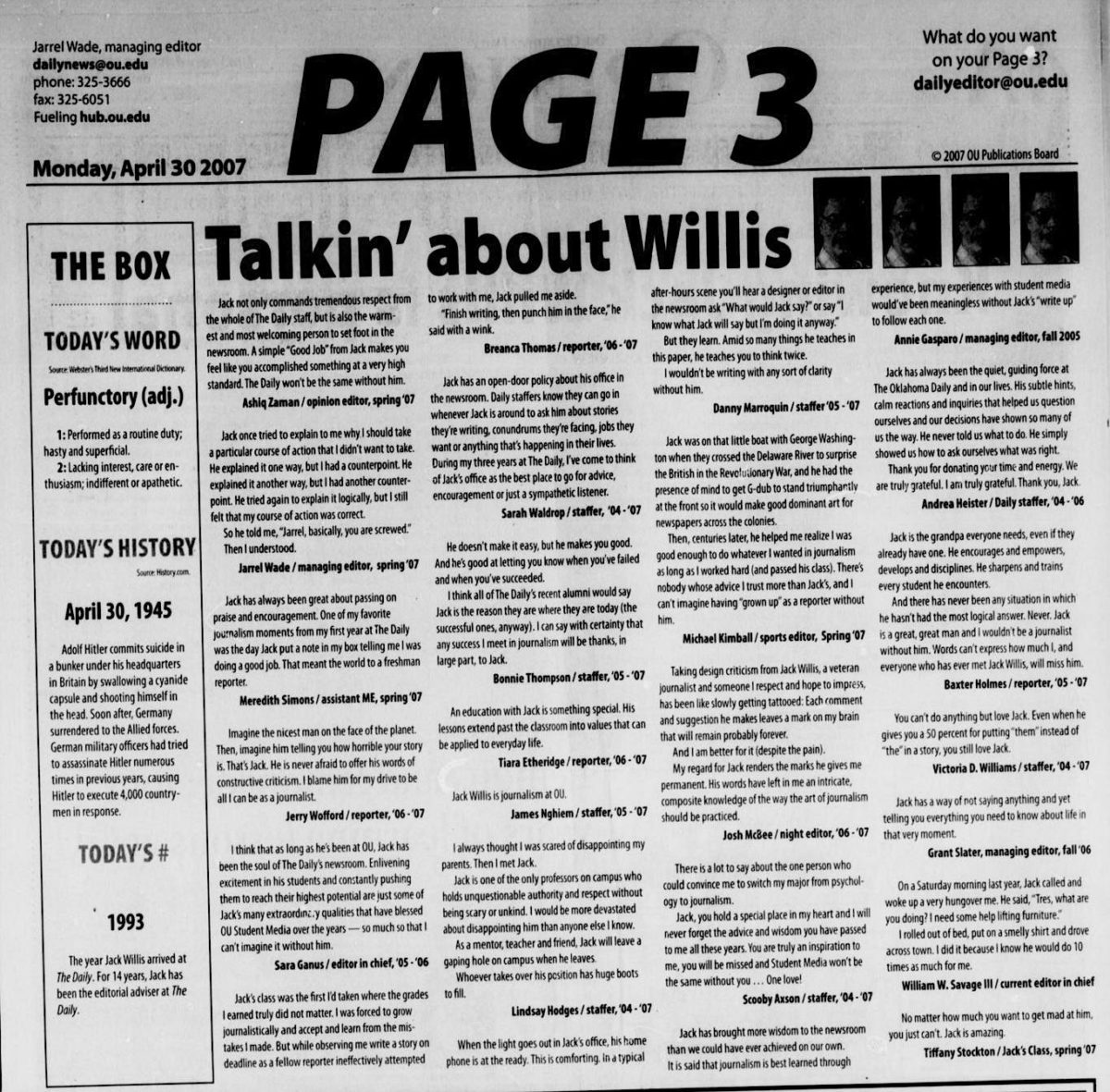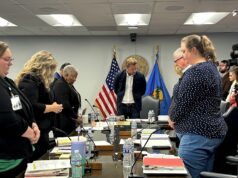

The University of Oklahoma’s student newspaper, long called The Oklahoma Daily and now simply The OU Daily, put out its first issue in 1897, making it one of the oldest publications in the state. Since its founding, the publication has chronicled the university’s greatest triumphs, its lighter moments and its most turbulent chapters.
Now, that history is being fully archived and made available online through the Carl Albert Center’s Gateway to Oklahoma History portal. The OU Daily archives include more than 200,000 individual newspaper pages that allow users to search each edition by keyword or browse full black and white pages one by one.
“For the general community, it makes the entirety of our archives available to anyone anywhere,” OU Daily faculty advisor Seth Prince said. “Whether it’s for research or just to browse for fun, we often have people that come into the newsroom and want to look at a paper from, say, 1963, and now they can do that without having to come in and dig through bound volumes.”
The digitization project marks an important step in preserving past editions of The OU Daily and, at the same time, preserving the history of the university.
Archive reveals university history

The project, which is sponsored by a grant from the Inasmuch Foundation, is led by Carl Albert Center lead archivist JA Pryse, who is an OU graduate.
The self-professed history nerd said it has been fascinating to pore over stories that encapsulate the past. In 1938, for instance, a local 14-year-old boy enrolling in ballet school was apparently unusual enough to warrant a short news story.
“You wonder what ever happened to him,” Pryse said. “Did he go off to Julliard, or did he stop his ballet career after college?”
Pryse has even gotten to read stories about his own grandfather, who played on the football team in the 1920s.
The new archive also documents shocking and shameful moments in the university’s history. During the early days of the project, Pryse found a story from 1977 about residents of one of the school’s dormitories wearing anti-gay T-shirts inside the student union.
“If you pull up these key terms, you can kind of see how it’s changed over the years,” Pryse said. “Racial things, LGBTQ things, women’s rights on campus. At one time, there was a series of articles about how women should be in their dorms by 3 p.m. so men wouldn’t be tempted. The president of the university at the time thought it was a good idea. And that’s what’s interesting about the paper, because that’s what was normal then. It’s this really cool way of looking at the university and seeing that we’ve made enormous strides on all levels.”
There are other metrics that show the university’s growth. In 1940, an article heralded the arrival of a then-record 1,000 freshman students. Today, the university typically welcomes about 4,000 to 5,000 first-year students each August.
Carl Albert Center director Michael Crespin said The OU Daily archives are a huge part of the university’s story.
“There are faculty who have been there for a long time, but, especially for students, their institutional memories are short,” Crespin said. “I’m thinking of when they built the dorms, the opening of these glorious towers. And now they’re tearing them down. Students don’t know what they looked like when they opened. So it really does serve as the institutional memory for the university.”
Digitizing is slow work
The archiving process is time consuming. Many of The Daily’s past editions are on microfilm, which have to be scanned and converted into raw data that would look like garbled characters to the human eye. The scanners that were purchased for this project can read a roll of microfilm, which contains about 1,200 pages, in seven minutes. Each issue is the broken down into pages, and volumes.
“It’s a very long process because you have 200,000 pages,” Pryse said. “You also have to break them down each day of the year, all the way down until you get one item.”
The OU Daily began keeping its own digital archive in 1995. Crespin said that can present its own problems.
Search The OU Daily
digitized archives today
“The one difficulty with digital is that it changes very quickly,” he said. “The newspaper that’s on paper in 1920 and the newspaper that’s on paper in 1995, the process is basically the same, but say it’s in one format digitally and it switches to another format. I wrote for my college paper in the ’90s, and we kept stuff in a folder on a Mac and probably kept poor records. So digital can be very complicated.”
And, in many ways, working with actual paper archives is easier than their digital successors, he said.
“If you think about PDFs and how that’s a standard thing, but what about 30 years from now and no one is using PDFs?” he said. “Think about Word Perfect. Is anyone even using that anymore? So with these formats, you have to figure out how to read that.”
Paper is old fashioned, but it works.
“Digital is probably harder to preserve for the long term,” he said. “Paper is actually a great medium for preserving things, whereas digital — how many times have you had a hard drive fail?”
Follow @NonDocMedia on:
OU Daily archives a resource for current students
For current student journalists, the archive could prove useful.
“Students could previously go over to Bizzell (Library) or here at the bound volumes, but I think this process speeds it up quite a bit, and I think provides a deeper context to the university and its history for them,” Prince said.
Prince said the idea for the project initially came about after Pryse and Crespin visited The OU Daily newsroom in search of archived articles on something in the university’s history, which led to a conversation about archiving the entire paper’s history on the Gateway to Oklahoma History portal.
Pryse said he hopes it becomes a resource for anyone who wants to use it.
“ROTC finds the paper fascinating because they can look up ROTC things,” he said. “The journalism school can find a different use for it. The history program with Dr. (Ben) Keppel, will use this as a primary history source for the state and the globe because it follows everything that’s going from the student’s perspective. Every college can use this in their own way.”




















